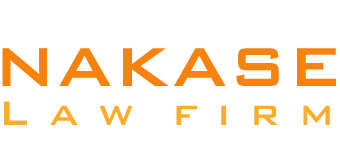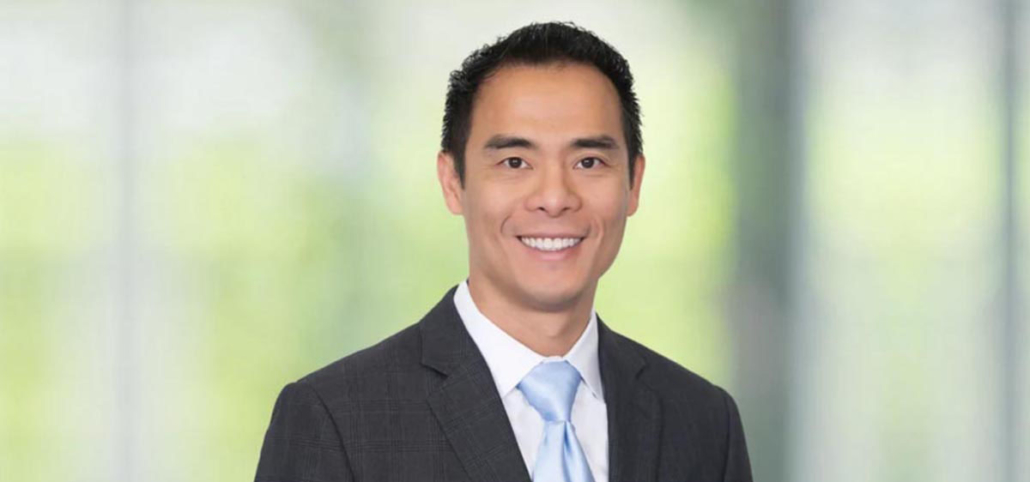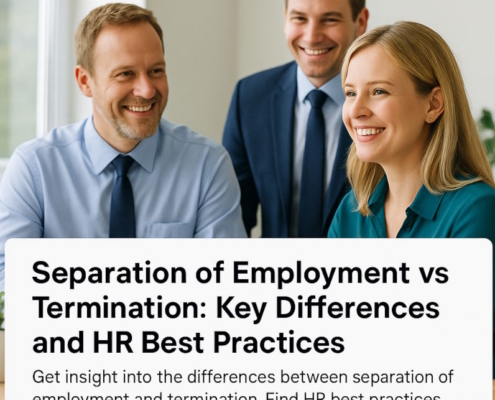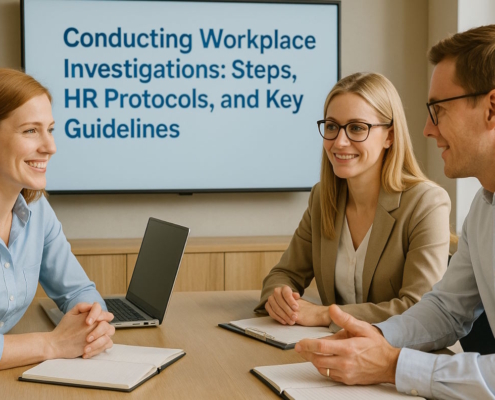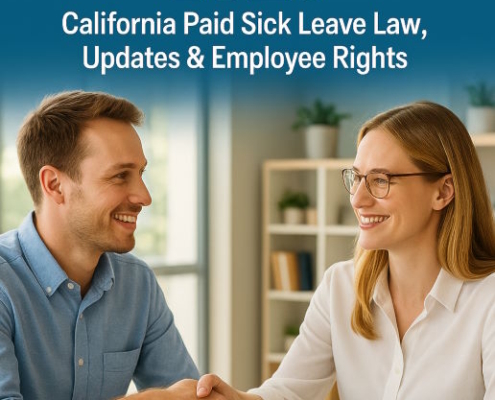Important Lessons
- In addition to performing on par with or better than their peers who are not involved in the criminal justice system, fair-chance hires are a powerful, driven, and mainly untapped pool of talent for the workplace.
- Fair-chance hiring is becoming a social necessity and an important part of many businesses’ efforts to be inclusive.
- People with criminal histories/past tend to stay in their employment longer and are far less inclined to leave them than people without criminal records.
- To implement fair-chance hiring, an organizational framework must be established. Risk needs to be evaluated and managed. Apart from that, recruiting must be rewired, and onboarding and retention must be addressed.
Here is a big problem: Massive personnel shortages are plaguing enterprises across all industries. In 2023, 75% of American companies reported having trouble getting the competent labor they required, which is a seventeen-year high. Here’s one more: Each year, over 600,000 individuals are released from federal and state prisons in the United States in search of employment, but they, in addition to millions of other individuals who have been involved in the judicial system, are unemployed at rates significantly greater than the country’s average.
Fair-chance recruiting is the answer to both challenges.
Those who have dealt with the justice system in some way, whether guilty of a crime, imprisoned, or detained but never found guilty, are considered fair-chance job applicants. These people—one in three adults in the United States—are more inclined than the average person to be actively seeking employment, yet due to their past, they have limited or no access to good job possibilities.
However, there is good news. According to the research, fair-chance hires outperform their colleagues without a history of participation in the legal system.
Characteristics of Job Seekers in the Fair Chance Sector
There are two main reasons for the careful hiring practices that are in progress:
- Employers have a strong, relatively unexplored talent pool to draw from when they use fair-chance hiring to satisfy essential talent needs.
- Fair-chance hiring is increasingly viewed by enterprises as a social need and an important part of their inclusiveness initiatives.
How Businesses Can Implement Fair-Chance Hiring
Our investigation revealed recurring themes among businesses that have successfully adopted fair-chance hiring. We discovered that the majority of companies begin with a small number of recruits—occasionally through a test run, but usually in a less formal manner—and then grow their program, building on their success and taking into account what they discover. Their experiences have been condensed into four categories:
- Establishing the Framework
Assess whether your company is a good fit for fair-chance recruitment. To fix an issue was the first step in fair-chance hiring for every company we looked at. Usually, this meant fulfilling a social need as well as a business need.
For instance, Toyotetsu, a Japanese supplier of car parts with a sizable US business in Texas, required staff. To lure top talent, Toyotetsu upped the ante by situating its Texas business in an industrial area in a semi-rural location that also hosted 24 competitors. Toyotetsu’s leaders decided to broaden their hiring approach to incorporate fair-chance applicants after hiring their first fair-chance applicant in 2018, as unemployment was down and the organization was having trouble finding and keeping frontline workers. This individual ended up surpassing other employees.
Fair-chance hiring may prove a suitable effort for businesses that currently implement inclusive practices. One excellent example is Cincinnati-based Nehemiah Manufacturing, a manufacturer of consumer goods. Daniel Meyer established the business with a focus on social impact. His idea was straightforward: he wanted to create an inner-city company that could hire locals.
Meyer received a request to hire somebody with a prior criminal charge while he was employed for a nearby charitable employment agency, just two years after the company’s founding. Meyer’s vision soon grew as a result of that first recruit’s success, and Nehemiah promptly looked for more workers with comparable backgrounds.
Choose a champion for change. Passion and dedication are non-negotiable in fair-chance hiring. The fair-chance initiative of many of the organizations we interviewed can be traced back to one individual who realized its potential and carried it out, either by himself or by assigning others to take the lead.
The gravity of the issue was demonstrated by the change champions they saw, who were usually in senior jobs and were conversant with the demands of the company. They changed the discussion from “can this be accomplished?” to “how can we do this?”
Leslie Cantu was appointed Toyotetsu’s change advocate following the success of the organization’s first fair-chance hiring. The company’s disregard for the justice-involved community made Cantu, the AVP of administration, question how many other diligent workers were being left behind. In order to investigate this, she started discussing how to fund the program with a Toyotetsu lawyer.
The initiative’s long-term success was largely attributed to her labor, which included developing a large portion of its original design and strategy, meeting with reintegration facilities to get more details about potential applicants, and organizing weekly discussions with probation officials and reentry facilities. It was successful; in 2023, Toyotetsu’s seventh year as a fair-chance employer, the company had over 250 fair-chance recruits.
Daniel Yanisse, the CEO of California-headquartered Checkr, was the first to advocate for change. Upon visiting a correctional facility in the Bay Area, he discovered that the people who participated in the justice system were disproportionately harmed by the business’s background check services. In order to offset that effect, he was inspired to make Checkr’s first fair-chance hire, demonstrating that workers with a history of involvement in the judicial system could be productive team players.
In order to expand fair-chance hiring & innovative thinking at Checkr, Yanisse has actually doubled down on the practice by employing an executive with a background in justice. Since the start of its program, the company has hired more than fifty justice-involved people in various positions and has pledged to explain the advantages of fair-chance employment to Checkr clients and other companies. Yanisse has stated, “Fair-chance talent that we have welcomed to Checkr consistently develops into extremely engaged, driven, and successful people.”
Involve direct managers and senior leaders. Having a champion is only the first step. C-suite executives, HR directors, and the direct supervisors of fair-chance hiring all play a crucial role in determining how a company views fair-chance hiring. We discovered that adopting fair-chance hiring didn’t always begin this way; frequently, it required deliberate change management, even while it is crucial that people share the business’s commitment.
After a few first hires at Toyotetsu, Cantu demonstrated to the leadership team the strategic value of fair-chance hiring. In order to demonstrate that fair-chance hiring made up a viable and effective talent pipeline, she monitored performance data on the number of individuals hired and kept by Toyotetsu and other firms. She also told the tales of Toyotetsu’s first employees and how their lives were affected by their jobs.
Given that managers were responsible for a large portion of the daily operational shifts associated with fair-chance hiring, Toyotetsu also offered training that addressed the particular difficulties these workers faced and dispelled any lingering opposition to the program by demonstrating its benefits to the person, community, and business.
Additionally, the organization promoted free communication between supervisors and their superiors. It was successful in bringing managers on board by concentrating on a common objective: being able to hire better individuals who would stay longer.
- Risk Assessment and Management
Think about the actual and perceived threats the company will encounter. Regulations and risk, either actual or, more frequently, perceived danger, are two of the most difficult obstacles that firms must overcome.
Longtime workers at the sustainable packaging company JBM Packaging in Ohio were skeptics. In order to “humanize individuals with records,” JBM arranged for staff members to visit correctional facilities and other businesses that had employed fair-chance applicants for educational purposes. Leaders also urged staff members to examine their own faults and think about how they resemble fair-chance applicants. By the end of seven years, JBM had hired 109 fair-chance workers.
Checkr vice president Ken Oliver cited misconceptions about fair-chance hiring. He claimed that rather than dismantling stigma and racism, there is “a danger in our becoming another jury and judge and maintaining it.”
Create risk-appropriate solutions for roles that are controlled or limited. The responsibilities that justice-involved people can play in some businesses are restricted by corporate or governmental legal and regulatory requirements. However, by rethinking their background-check procedures and establishing positions for fair-chance applicants, companies looked at ways to humanize hiring and discovered opportunities to collaborate with fair-chance hires.
For instance, the Federal Deposit Insurance Act, which includes disqualifying offenses with differing degrees of exclusion, applies to financial institutions. One industry participant started performing individualized application assessments because it did not want to remove exceptional fair-chance individuals from its applicant pools, even though it was subject to federal regulation.
It can better comprehend the background context of each applicant on an individual basis, thanks to these discussion-based tests, which enable it to review applications in compliance with regulations and find eligible applicants.
Evidently, some businesses use their own discretion to determine what is best for their company because they are subject to few or no statutory restrictions on employment. One real estate development company, for example, started using fair-chance hiring by making a distinction between internal positions (where it might have been less strict about criminal history, education, and even drug requirements) and client-facing positions (where contract stipulations forced it to be more stringent about convictions and drug requirements).
Additionally, Toyotetsu has loosened its previous policy of avoiding hiring anyone with violent offenses. These days, Toyotetsu takes into consideration applicants who have worked continuously for a full year prior to applying; it assists them in meeting this condition through community organizations like Goodwill.
- Rethinking Hiring
Make job descriptions that are friendly. Certain companies discovered that fair-chance applicants were not submitting applications because they believed they were undesirable. The University of Chicago, for instance, revised the language on its job listings to explain how its background check policy operated so that those involved in the judicial system understood they were eligible in an attempt to more deliberately draw in fair-chance applicants.
The current wording is as follows: “A background check, which includes an examination of criminal history, is a requirement for all employment offers. Employability at the university is not always impacted by a conviction. Instead, the University evaluates conviction data on an individual basis, taking into account the type of violation, the events surrounding it, the sentence’s closeness in time, and its significance to the role.
From the beginning, clearly define the paths for progress. People with prior criminal justice system experience are eager to get jobs and excel in those occupations so they can move to better positions. Fair-chance individuals performed on par with or better than their peers, according to over 80% of business and HR professionals. This indicates that they have the potential to advance to other positions and beyond expectations in their first role.
Freedman Seating, a Chicago-based company that makes seats for different kinds of public transit, has taken action to increase the transparency of the promotion requirements and protect fair-chance employees from any personal prejudice. It has established official progression initiatives, and Freedman prioritizes providing an explanation and outlining the steps an employee may take to better their chances going forward when they are not given a desired promotion.
By coordinating incentives and encouraging upward mobility, this helps Freedman maintain top talent and fosters the long-term development of both fair-chance and “conventional” employees.
Revamp interviewing, screening, and sourcing. Freedman Seating used a nonprofit that offered job placement, training, and reentry support to people involved in the judicial system, as part of an active fair-chance hiring strategy. In order to acquire permanent staff, Nehemiah also collaborated with a third-party company, employing temp workers for a period of three months. Nehemiah had the opportunity to evaluate job fit and job performance at that time, and temporary workers could find out if they enjoyed their jobs. If both sides were happy, the job was made permanent.
- Orientation and Retention
Look for strategies to support fair-chance hires as they deal with new problems both at and outside of the workplace. We discovered that companies had carefully considered how to position fair-chance workers for success in every instance we looked at. Even while they didn’t always begin with a purpose to teach or nurture fair-chance talent in a distinct way (certain techniques frequently developed naturally), they discovered that it was beneficial.
A required new-hire bootcamp was instituted by Toyotetsu to educate new hires about the manufacturing sector, important jargon, and the company’s standards. New hires are given steel-toed shoes and uniforms after they graduate. They are then connected to supportive programs to aid with basic requirements like transportation, food, and housing insecurity, and they are paired with mentors to help them get through the initial months on the job. According to the organization, career coaching and training significantly affect employee retention.
When faced with a hurdle, Nehemiah changed its strategy: its fair-chance hires ceased turning up for duties, even when they performed well. The corporation eventually discovered the root cause, which was the structural difficulties its fair-chance hires encountered. By employing social workers, it was able to create a tailored solution that helped staff members comprehend and deal with the issues that often keep fair-chance workers from attending, such as precarious housing, a lack of daycare, or even unforeseen parole or probationary obligations.
The CEO of Nehemiah determined the cost of employee turnover and used some of that money to finance the hiring of extra social workers and additional services in order to grow this solution. Nehemiah extended the number of days that social workers were accessible until they had a complete staff as the number of fair-chance employees increased.
Consequently, turnover decreased to 15%, which was far less than that of rivals (whose turnover can surpass 50%). In addition to providing comprehensive support for fair-chance recruits, the experience helped create a network of supplemental and necessary wraparound amenities that have evolved into Nehemiah’s eight foundations of support.
Get public and nonprofit partners involved. Almost always, groups did not undertake it alone. Instead, they collaborated with external entities, frequently NGOs, to offer services or knowledge that they lacked.
Toyotetsu made the decision to outsource the wraparound support after realizing that its percentage of fair-chance employees had increased significantly. It established a connection with Chrysalis Ministries, the community’s fair-chance specialist. Chrysalis offered retention training on the job for a year. These days, Toyotetsu also works with career coaches, Workforce Solutions Alamo, and other local organizations to address particular needs, including training for job preparedness and stable transportation.
Other businesses made audacious new decisions that later called for some forceful reversals.
During staff conversations, Nehemiah, for example, attempted to tackle the housing problem. It “went solo” at first, with Nehemiah purchasing apartments to provide housing for new employees. This seemingly simple answer proved to be unsatisfying because some employees were unwilling to reside in the neighborhood where the residences were located or close to their colleagues.
With fair-chance workers, innovative, multimodal approaches can help optimize engagement.
Meyer quickly recognized the lesson, yet he was still determined to meet the specified need. The company currently provides a first-time house-buying program wherein the business matches five thousand dollars in cash for a first-time housing purchase, in addition to offering two-year transitional accommodation at a submarket price.
Additionally, the housing offer is integrated with additional support services offered by neighborhood organizations, such as used furniture buying, legal assistance, job-readiness training, and child education and extracurricular activities. Nehemiah now has refined relationships and can rely on assistance because it has been working with several of these NGOs for more than ten years.
Freedman Seating provides transportation and living support via WorkLife Partnership, a group that assists employers in offering extra assistance to their staff. Employees were not using these services in the beginning stages of the initiative, according to Freedman, which indicated a lack of awareness. The usage of the services grew once the corporation started to better market them through luncheons, 90-day inspections, and new hire shadowing.
Since many fair-chance workers operate without desks and need interaction channels other than email, innovative, multimodal methods to maximize participation are especially crucial.
Keep promoting a culture of empathy. In order to establish a supportive culture throughout the entire organization, companies can leverage pertinent company values, relationships, and fields of expertise to integrate fair-chance hiring. Toyetetsu is a proponent of mendomi, which is treating employees like family. As part of this objective, the organization fosters a culture of caring and inclusiveness and offers tools to all employees, preventing fair-chance hires from being singled out.
Fair-chance hiring programs have been effectively implemented by several firms for decades. They have learned from input to test new tactics, adjust, and track their progress. They have had a significant social impact and have been able to meet workforce demands thanks to this.
This is something that other businesses may accomplish as well; the leaders shown here provide guidance for those who decide to implement a fair-chance hiring policy. A comprehensive recruiting strategy that meets a range of unmet requirements will gain momentum, acceptability, and enthusiasm from the upcoming generation of fair-chance businesses.
